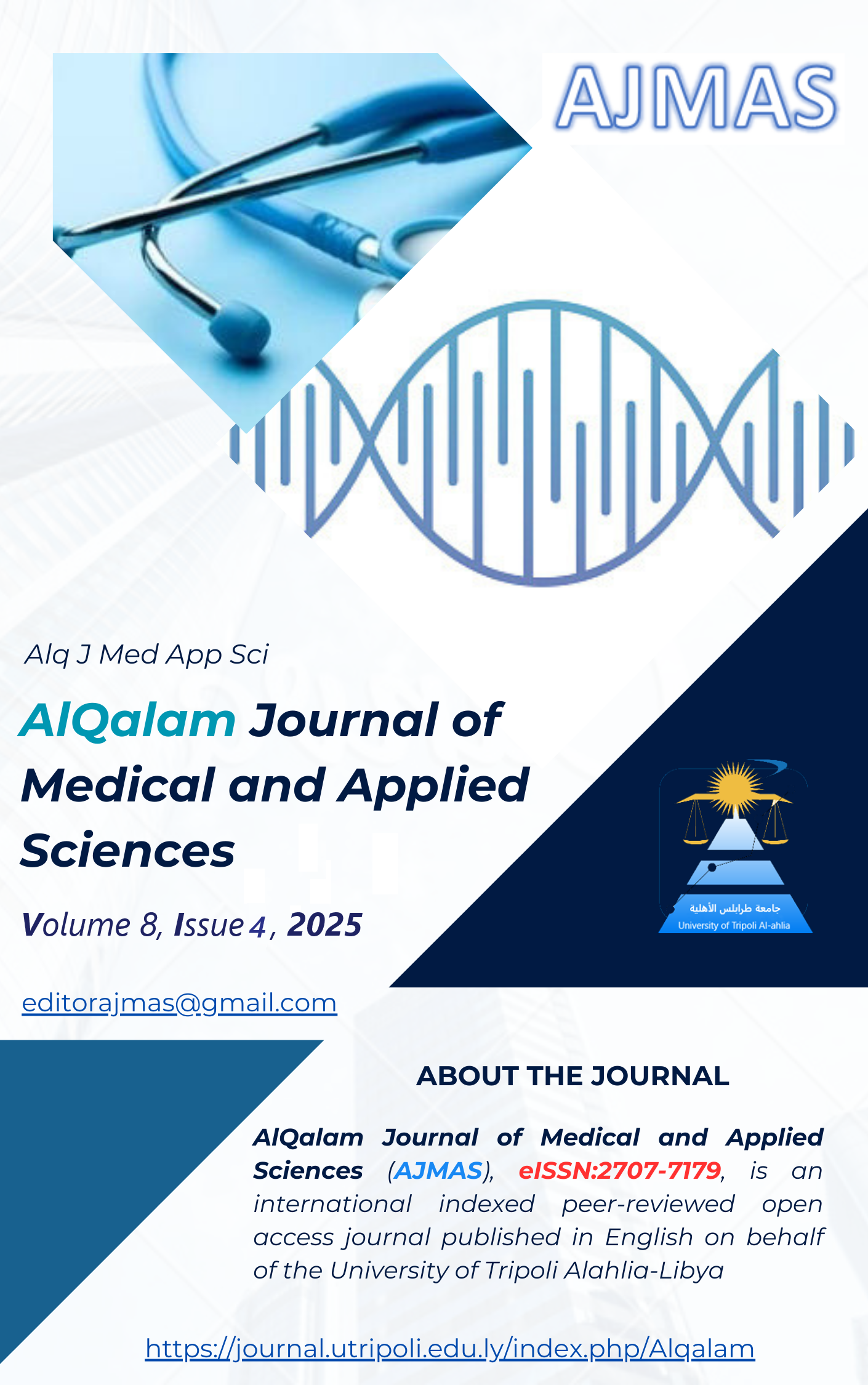Prevalence and Angulation Pattern of Mandibular Third Molar Impaction in a Libyan Sub-population: A Retrospective Radiographic Study
DOI:
https://doi.org/10.54361/ajmas.258448Keywords:
Impaction, Third molar, mandibular, Libya, Retrospective, Panoramic Radiography ImagesAbstract
Background: In the oral cavity, impacted teeth are those which fail to erupt into their proper functional location beyond the chronological time usually expected. Etiology may be multifactorial, usually due to adjacent teeth, dense overlying bone or soft tissue, size of the mandible or maxilla with the resultant lack of space in the jaw, aberrant path of the eruption, abnormal positioning of tooth bud, differential root growth between the mesial and distal roots, or pathological lesions. Amongst all, mandibular third molar impaction is an important clinical issue, as impacted teeth may predispose to periodontal disease, such as: Pericoronitis, Periodontitis, cystic lesions and neoplasms, root resorption, causing determined effects on the adjacent tooth and resulting in pain, discomfort and loss of function. Impacted third molars can be diagnosed based on clinical as well as radiographic examination. Intraoral and panoramic radiographs are usually used to assess the impacted molar, helping to evaluate the pattern of impaction, aiding in accurate treatment planning and management. Different classifications have been introduced of which Winter's and Pell, and Gregory Classifications are claimed to be the most common ones. Aim: To radiographically evaluate the prevalence and angulation pattern of mandibular third molar impaction in terms of age, gender and side in a sample of Libyan patients, using panoramic images. Materials and Methods: It is a retrospective, cross-sectional (2021-2022) study, that utilized the radiographic records; Panoramic images of 1000 patients, aging between 20-50 years old, attending the Dental Center in the Faculty of Dentistry at the Libyan International Medical University (LIMU) Benghazi- Libya. Based on Winters Classification, the method of defining the angle of impaction by estimating the angle between the longitudinal long axis of the second and third molars to decide the type of impaction: Mesioangular, or distoangular, or vertical, or horizontal, or others. Results: Among the original sample (1000 images), only 783 images were included; 130 (16.6%) displayed impaction of mandibular third molars, including 70 (53.85%) males; (P>0.13) and 60 (46.1%) females; (P>0.06). The most frequent age group was 22 years (16%); out of which 11 (50%) were males and 10 (45 %) were females. The most common angulation pattern of impaction was the mesioangular position (53.8%). Conclusion: In the assigned sample, the mesioangular impaction is the most common angulation pattern followed by the vertical, and horizontal patterns. Males had an increased predilection of third molar impaction than females. The prevalence of mandibular third molar impaction was higher on the left side and most frequent in the 22years old age group.
Downloads
Published
How to Cite
Issue
Section
License
Copyright (c) 2025 Mervet El-Zuki, Farha Alamami, Haneen Albillah, Alaa Ayman, Maha Elfeitore

This work is licensed under a Creative Commons Attribution 4.0 International License.















